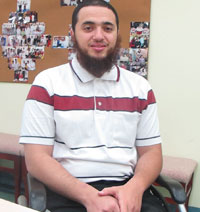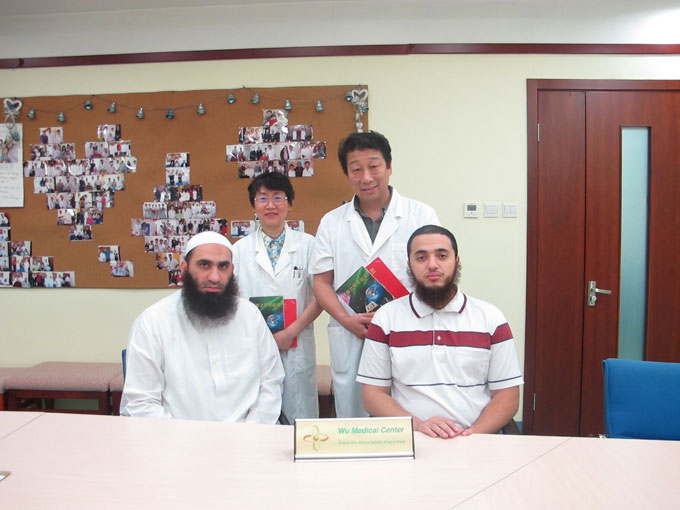Mohamed Amin Abdullateef-Spinal Cord Injury-(Egypt)-Posted on Sept.21th, 2015
 Name: Mohamed Amin Abdullateef
Name: Mohamed Amin Abdullateef
Sex: Male
Country: Egypt
Age: 32 years
Diagnosis: Sequela of Spinal Cord Injury
Date: Aug 16th, 2015
Days Admitted to Hospital: Wu Medical Center/21 days
Before treatment:
2 years ago, patient was injured by firearm weapon causing abdominal perforation. He had corresponding operations such as splenectomy, diaphragm and prosthetics for left kidney. He has participated in rehabilitation training and the function of the upper part of his body has been restored gradually. However, his legs still could not move and he still had urine and stool incontinence. In the immediate past year, his muscles in the legs had become conspicuously atrophied. Three months ago, he was admitted in our medical center. His muscle power improved in response to our treatment. When he turned his body to one side, his muscles had contracture. After discharge, patient developed less serious in the rehabilitation and did not feel satisfied with the improvement, so he came to our medical center again for 2nd round of treatment.
He has a regular sleep and diet. He has urine catheterization every four hours and has to use glycone to wash his intestine and help pass his stool. He has no change in his weight since he was injured.
Admission PE:
Bp: 115/72mmHg, Hr: 77/min, Tr: 36.5 degree, Br: 18/min. He was well-nourished. His skin mucosa was intact without yellow stain or bleeding spot. His thorax was symmetrical and the respiratory sound was clear without dry and moist rales. The heart sound was strong and regular and there was no obvious murmur in the valve. The abdomen was flat without tenderness. There was a scar of 15cm long in the middle of abdomen. The liver and spleen were normal under palpation.
Nervous System Examination:
Patient was alert and his speech was fluent. His memory, calculation and orientation abilities were normal. Both pupils were equal in size and round, the diameter was 3.0 mms. Both eyeballs could move freely. Both eyes had sensitive response to light stimuli. The forehead wrinkle pattern was symmetrical. The tongue was centered in the oral cavity and the teeth were shown without deflection. The neck moved normally. The muscle tone of both upper limbs was normal; the muscle power was at level 5. The muscle tone of both lower limbs was lower than normal. The muscle power of proximal right leg was at level 2, and that of distal right leg was at level 0. The muscle power of proximal left leg was at level 1+, and that of distal left leg was at level 0. The examination of shallow sensation: T11-L1 was lower than normal and the shallow sensation below L1 was absent. The examination of shallow sensation: L1-L3 vibrational sensation was lower than normal. The deep sensation below L3 was absent. Both upper limbs' tendon reflex was normal. Both lower limbs knee reflex and achilles reflex could not be elicited. Both side abdominal reflexes were normal. Bilateral Hoffmann was neutral. The coordination examination of legs could not be elicited. The meningeal irritation sign was negative.
Treatment:
After admission, his diagnosis 'Sequela of spinal cord injury' was confirmed. He was given three times' injections of neural stem cells and mesenchymal stem cells to initiate his neural repair and regeneration, and also activate his own stem cells. He also received treatment to nourish nerves, improve circulation, and adjust immune system. This was accompanied with rehabilitation training.
Post-treatment:
After treatment, patient's sensation ability and motion has become better. The intensity of vibrational sensation is stronger than before. When he turns to one side, he can straighten his leg and rise up from the bed. The muscle power has improved. The proximal muscle power of legs is at level 2+. The adduction muscle power is 1+ and he can locate the contraction of muscles. The deep sensation has expanded from L2 to L4.

